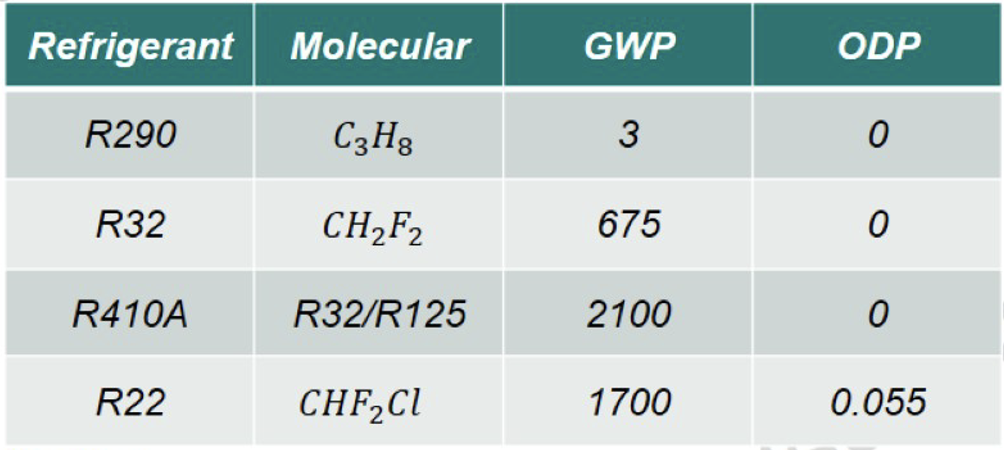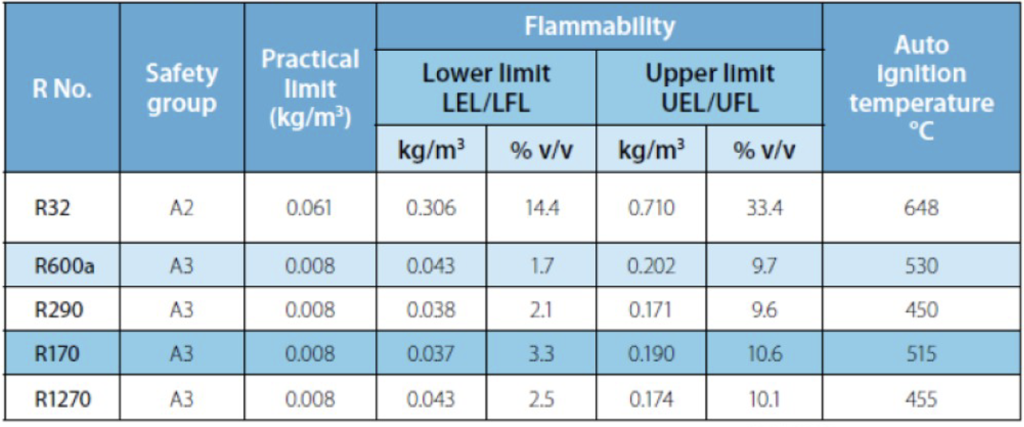As the HVAC industry evolves, the shift from R410A to R32 refrigerant is gaining momentum. This change is driven by the environmental and efficiency benefits of R32, which has an ozone depletion potential (ODP) of 0 and a global warming potential (GWP) significantly lower than R410A. In this article, we will explore the differences between R32 and R410A, the reasons behind the phase-out of R410A, and the advantages of switching to R32.
Key Differences Between R32 and R410A

Ozone Depletion Potential (ODP):
- Both R32 and R410A have an ODP of 0, meaning neither contributes to the depletion of the ozone layer.
Global Warming Potential (GWP):
- R32 has approximately one-third the GWP of R410A, making it a far more environmentally friendly option. This reduction in GWP translates to a significantly lower greenhouse effect.
Cooling Efficiency:
- R32 boasts higher cooling efficiency compared to R410A. This increased efficiency means that HVAC systems using R32 can achieve the same cooling effect while consuming less energy.
Refrigerant Refill:
- In terms of gas refilling, less R32 is required than R410A. This not only makes R32 more cost-effective but also easier to handle during maintenance and refilling processes.
Flammability:

- R32 is moderately more flammable than R410A. Despite the licensing provisions, employers have a duty of care to ensure that their workers are appropriately trained and equipped to handle R32 refrigerants safely.
- Due to its flammable nature, R32 refrigerant is prohibited from being transported by air. Consequently, if your clients require an urgent order of R32 units, they will need to wait for the units to be transported by road or sea.

The Phase-Out of R410A
Beginning in 2025, the use of R410A refrigerant in HVAC systems will be prohibited across Canada. This regulatory change is aligned with new Seasonal Energy Efficiency Ratio (SEER) requirements, known as SEER2, which aim to increase energy efficiency standards for HVAC equipment manufactured from 2025 onwards. The phase-out of R410A is a critical step toward reducing the environmental impact of HVAC systems.
Kinghome is planning to gradually introduce equipment that uses R32 and R454B condensing units, with these upgrades expected to be completed by the end of 2024.
Advantages of Switching to R32
1. Higher Efficiency: R32’s higher cooling efficiency makes it more energy-efficient than R410A. This improvement can lead to significant energy savings for consumers.
2. Cost-Effectiveness: Since less R32 is needed for gas refilling, the cost associated with maintenance and refilling is lower. Additionally, R32 can reduce electricity consumption by up to 10%, further lowering operational costs.
3. Environmental Benefits: R32 has a GWP that is three times lower than that of R410A. If all R410A systems were converted to R32, the global warming impact from hydrofluorocarbons (HFCs) could be reduced by the CO2 equivalent of approximately 800 million tons by 2030, which represents a 19% reduction.
Conclusion
The shift from R410A to R32 refrigerant is a crucial step toward a more sustainable and efficient HVAC industry. With its lower GWP, higher cooling efficiency, and cost-effectiveness, R32 presents a compelling alternative to R410A. As the phase-out of R410A approaches, making the switch to R32 will not only comply with new regulations but also contribute to a greener future.

I shall appreciate the clarification regarding the “beginning 2025, the use of R410A refrigerant in HVAC systems will be prohibited across Canada”. In April, 2025 a HVAC contractor in BC installed and new fual fuel, furnace and heat pump system in my house. I was surprised the heat pump was manufactured in 2023 and uses R410A. My contractor told me they are legally allowed to continue installing new AC systems using R410A until end of 2025. I am not satisflied with their response as I found out many HVAC companies already switched to R32 or R454B. I tried to get answers from the BC provincial authority, Technical Safety BC who regulates the use of refrigerants but they did not respond. Please advise. Thanks!